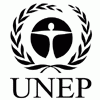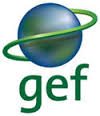Community / Land projects / Sustainable land management and restoration of productive landscapes in river basins for the implementation of
Sustainable land management and restoration of productive landscapes in river basins for the implementation of

€1532623.287
03/22 - 02/25
Активно
This project is part of
Implementing Organisations
Donors
Data Providers
Objectives
Expand sustainable land management and restoration of productive landscapes in hydrographic basins for the implementation of the national goals of Land Degradation Neutrality (LDN) in Panama.
Other
Note: Disbursement data provided is cumulative and covers disbursement made by the project Agency.
Target Groups
Sustainable agronomic practices and treatments developed by FAO have shown improvements in soil quality, nutrient content and availability, and resistance to degradation[1]. Some of these practices such as crop rotation, the integrated use of fertilizers and bio-pesticides, organic agriculture, combined with good agricultural and livestock practices adapted to the climate, will generate environmental, social and economic benefits of impact for the beneficiaries. The project has estimated to directly benefit 4,000 producers (1,400 women and 2,600 men), including at least 600 young people of both sexes, who will be targeted by various activities that include capacity building in the techniques proposed by the project, training of Field Schools with producers, technical assistance and extension, dissemination of climate, productive and agro-environmental information, training of young people and women in the use of ICTs and environmental monitoring technologies (drones, GPS, etc.), and direct investment in replicable production models in other parts of the selected basins or in other basins. Therefore, direct benefits will be estimated for those who are beneficiaries of these actions, and indirect benefits for other producers and their organizations may benefit from information through the means that have been proposed in the Communication Strategy, specific training, knowledge and access to financing sources, digital extension, etc. On the other hand, the project will generate positive externalities such as, the capacity for carbon fixation and water infiltration in the areas recovered with agroforestry and / or riparian forests and conservation of local biodiversity, etc. Although the beneficiaries in general (direct and indirect) do not quantify these benefits, the positive externalities will generate a high-value social NPV that indirectly shows that the best productive practices have returns within the farms and for the community in general. With these beneficiaries and with other benefits such as access to information through digital means, greater knowledge and access to credit, digital extension, and positive externalities, it is estimated that for each direct beneficiary, at least four other people may be impacted. of the execution areas, that is, about 16,000 people. The environmental benefits of the project include the reduction of emissions measured with the CORE Indicator 6.1 Greenhouse Gas Emissions Mitigated and the goal of -138,068 tCO2e of gases avoided in the AFOLU sector. To demonstrate the changes in the reduction of emissions and the fulfillment of this indicator and its goal, the modeling tools of FAO, the Global Livestock Environmental Assessment Model [GLEAM] and the Ex-Ante tool of Carbon Balance will be used [ EX-ACT]). Work will be done in coordination with MiAmbiente and MIDA and articulation with the platforms and commitments of the Climate Change Directorate to report and monitor the contributions of the country's commitments established in international agreements. At the beginning of the project, the baseline will be raised in the sub-basins for the execution of greenhouse gases (GHG) generated by productive activities without a project. To measure the changes (with the project), and other measurement will be carried out for the final stage of the project. It is estimated that the changes produced with the good SLM practices should be shown and the goal established in the project should be reached. Another expected environmental benefit is the change in the composition of the productive landscape to verify the application of good agricultural, livestock and agroforestry practices. This will demonstrate concrete results of mitigation, prevention, and restoration of specific areas identified as critical in execution areas. FAO will implement the GLEAM tool for the modelling of GHG in the livestock production activity (milk/meat), which will have a training process for its use and then the application at the level of the 4,600 ha of livestock that is expected to be converted into livestock systems efficient with livestock techniques integrated to the climatic conditions of the sub-basins. It will also support the development of institutional capacities for (i) the use of these tools with specialized personnel, having started training on the use of the EX ACT tool; ii) the acquisition of materials and equipment for the application of the monitoring tools; iii) monitoring and reporting of LDN goals at the local level (sub-basins) that will contribute to the national LDN goals; iv) field assistance to train MIDA and MiAmbiente technical field teams in monitoring emissions; v) development and implementation of RTH Corporate and Products program, creating national capacities for national GHG monitoring, measurement and registries; vi) transfer of information to SINIA, MIDA and IDIAP on best livestock practices, restored areas, GHG reduction by activity; and vii) coordination with MiAmbiente MIDA and ANAGAN on sustainable livestock initiatives (NAMA Ganadero, NAMA rice and the National REDD + Strategy). The social benefits of the project include: i) Strengthening institutional capacities in the planning and ordering processes of the use of the territory and applying techniques for monitoring productive landscapes (GLEAM, EX ACT, others); ii) the capacity building of social and human capital in producer groups by transferring knowledge, processes, and information to informed decision-making; iii) the integration of women and youth in activities enhances their understanding of technology, communication, extension, and monitoring. The project will also develop tools in coordination with the MiAmbiente Directorate of Climate Change and the MIDA Agro-environmental Unit to design, disseminate and train in the application of the water footprint and the carbon footprint in productive systems through RTH Corporate and Products program, to make more efficient use of land and water and increase the resilience of the primary productive sector. Regarding the economic benefits, during the preparation, an exercise was carried out with economic models of (one hectare each) of key items for the project: livestock with silvopastoral systems, agroforestry of coffee with timber, fruit trees, plantain or banana and a hectare of diversified production (rice, corn, beans, pigeon peas, beans, cassava). The result of this exercise without and with the project for an estimated period of 5 years indicates economic benefits derived from an improvement in land use and an increase in productivity per crop. Basic assumptions of the models were: i) the model is for one hectare, but the producer could replicate it in a larger area; ii) the exercise in livestock and agroforestry is long-term (20 and 10 years, respectively) because they are economic recovery activities after the third or fourth year when the project will end; iii) the producer may choose to produce one or more items on a plot depending on the plot's size and financial capacity. However, these models are guides for economic benefits with changes in better soil management with sustainable production techniques of the magnitude of the changes that can occur in the well-being of families, the following values ??are estimated[2]: One hectare with a silvopastoral system, including pasture re-boring, with an initial investment of USD3,390 / ha and annual maintenance costs of USD432, at a 5% discount rate, in 20 years would have an internal rate of return (IRR) of 21%. Without the project, the return at 20 years is negative because productivity remains constant, and maintenance costs almost totally absorb income. One hectare of plantain coffee agroforestry, with an investment of 2,954 / ha and annual maintenance costs of USD1,670, at a discount rate of 5%, by year ten would obtain an IRR 20%. With the monoculture system, the return on investment without the project in the first three years of establishment, there is no income (only maintenance costs). Therefore, after ten years, the return on investment is negative. One hectare of diversified crops (rice, corn, beans, etc.), with an investment of USD1,454 at a discount rate of 5%, would have an annual net profit of USD748. In 5 years, it represents an IRR of 75%. Net yearly profit without the project is USD493. Conversion of one hectare of pasture to one hectare of agroforestry with fruit trees (citrus, soursop, mango, etc.) and timber with an initial investment of USD2,722 and average annual maintenance costs up to year 5 of USD523, during a period of20 years, at a discount rate of 5%, would obtain an IRR of 23%. Without the project, the annual income is marginal in relation to a traditional livestock system's maintenance costs. Although these are only indicative values, which can be improved with the demonstration models, the improvements in ecosystem services will also facilitate other benefits such as the opportunity of other agribusinesses (ecotourism, rural tourism, non-timber products, etc.) that can generate income and green jobs, improving the well-being of families and their communities and contributing directly to SDG 1 (poverty reduction) and SDG2 (food security) and indirectly to SDG10 (reduction of inequalities) in areas of execution. [1] http://www.fao.org/soils-portal/soil-management/otras-herramientas-para-mst/es/ [2] Consultancy Report on Sustainable Financial Management for the Sustainable Land Management Project (SLM) and restoration of productive landscapes in hydrographic basins for the implementation of the national goals of Land Degradation Neutrality (LDN) in Panama. R. Barzev, February 2021.




